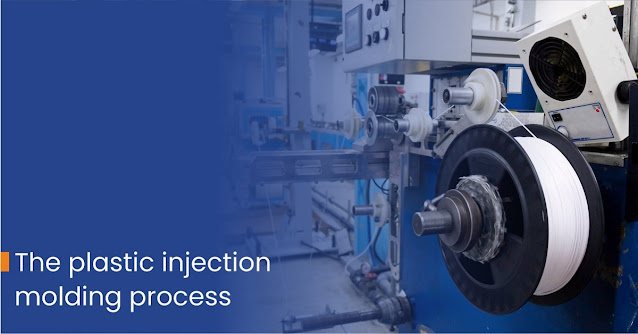Things OEMs should know about Plastic Injection molding
Plastic injection molding is a manufacturing process in which plastic materials are heated and injected into a mold to produce a wide variety of parts and products. This process is widely used in the production of a variety of plastic products, including medical devices, toys, and automotive parts. The method is considered to be perfect for the quick turn of single-mold plastic parts.
The plastic injection molding process
The process of plastic injection molding begins by heating the plastic material, which is typically in the form of pellets or granules, to a high temperature. This melted plastic is then injected into a mold, which is a hollow metal or plastic cavity in the shape of the desired part or product. The mold is typically cooled with water, which helps the plastic to solidify and take on the shape of the mold.
Once the plastic has solidified, the mold is opened and the finished part is removed. The part may then be trimmed, painted, or otherwise finished as needed.
Typically, the original electronic manufacturer passes a design of the required plastic part to the electronic manufacturer who built the part. One of the key advantages of injection molding is its ability to produce high volumes of parts quickly and efficiently. The process is also highly versatile, allowing for the production of parts with complex shapes and designs. Additionally, plastic materials allow for the creation of lightweight parts that are strong and durable.
Choosing the right molding company
When it comes to choosing a molding company, there are several factors to consider. First and foremost, you want to ensure that the company you choose has experience in the type of molding you need. This is especially important if you are in a specialized industry, such as medical or automotive, as the requirements and standards can be very different.
Another important factor is the company's ability to handle the size and scale of your project. If you have a large or complex project, you want to make sure that the company has the capacity and expertise to handle it. This may mean looking for a company with a large manufacturing facility and a skilled workforce.
Another key consideration is the company's track record and reputation. Look for a company with a history of successful projects and satisfied customers. Ask for references and check out their website and social media presence to get a sense of their work and how they interact with their customers.
Finally, the cost is always a factor when it comes to manufacturing. However, it's important to remember that the lowest price isn't always the best value. Look for a company that offers competitive pricing, but also has the experience and capabilities to provide high-quality molding and excellent customer service.
Choosing the right injection molding company requires careful consideration of several factors. By taking the time to research and compare your options, you can find a company that will provide the molding solutions you need to meet your project's requirements and goals.
I introduce you to my reference company - Mefron technologies, Ahmedabad, which uses a state-of-the-art plastic injection molding machine for mold parts. They can provide highly accurate and accommodative parts that show high tolerance levels and dimensional stability even in the most laborious applications.
About the plastic injection molding machine
Injection molding machines consist of a hopper, which feeds plastic resin into a heating barrel. The resin is melted by heat and pressure and then injected into a mold cavity through a nozzle. The mold is made up of two halves, which are held together by a clamping mechanism. Once the plastic has been injected into the mold, it is allowed to cool and solidify. The mold is then opened and the part is ejected.
There are a few key factors that can affect the performance of an injection molding machine. These include the type of resin being used, the size and complexity of the mold, and the speed and pressure at which the plastic is injected into the mold. The choice of resin can also impact the strength, durability, and appearance of the finished parts. So the delivery speed and accuracy of the final product depend on the resin used and design complexity.
Conclusion
One of the main advantages of plastic injection molding is its ability to produce complex parts with high precision and repeatability. The process allows for a wide range of design options, including the ability to incorporate features such as ribs, bosses, and threads. Injection molding is also a relatively fast process, with the ability to produce thousands of parts per hour. In conclusion, plastic injection molding is perfect for the mass production of parts and supporting tools at a fast pace.




Comments
Post a Comment